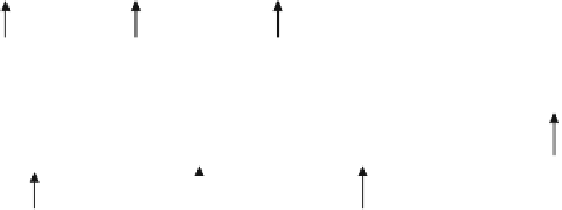Information Technology Reference
In-Depth Information
Integration metamodel and the
i
∗
metamodel mapping
Ta b l e 2
Extended
I
∗
element
Extended I
∗
element
I.M. element
I.M. element
Node
Node
Resource
DResource
.model
.model
.kind
(No equivalence)
.name
.name
.providedBy
.relatedDependee
(inherited from
Dependency)
.boundary
.boundary
.requiredBy
.relatedDepender
(inherited from
Dependency)
OOmReqModel
IStarModel
.producedBy
(No equivalence)
.name
.name
Task
ITask
.ownedNode
.ownedNode
.provides
.relatedDependee
(inherited from
DependableNode)
Actor
Actor
.requires
.relatedDepender
(inherited from
DependableNode)
.element
.ownedElement
RequiresLink
DependerLink
ProvidesLink
DependeeLink
.task
.node
.task
.node
.resource
.dependency
.resource
.dependency
EntityKind
(No equivalence)
generated, which are used to perform the automatic transformation of GORE models
into MDD requirements models. These mappings are the following:
1. The mapping between the Integration Metamodel and the extended GORE meta-
model. In the example, this corresponds to an extended version of the mapping
presented in Table
2,
where the elements of the Integration Metamodel that
have no equivalence in the
i
∗
metamodel are mapped to the corresponding UML
profile elements.
Fig. 11
UML profile generated from the integration metamodel of the example













































Search WWH ::

Custom Search